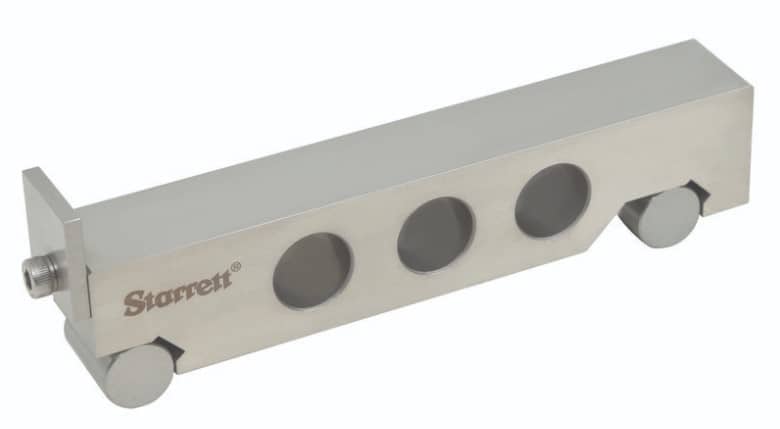Metrology Glossary: Sine Bar
What Is A Sine Bar?
A sine bar is a critical precision instrument used for highly accurate angle measurement and calibration. It comprises a steel bar that has been hardened and ground, featuring two precisely positioned rollers at its extremities. These rollers are set with a high degree of accuracy to determine the precise distance between their centers. This well-defined separation allows users to achieve precise angular measurements and calibration.
What Are Sine Bars Used For?
Precise Angle Measurement:
- Setting Angles: Sine bars establish precise angles for cutting tools on machinery like milling machines and grinders, ensuring accurate machining and preventing errors.
- Measuring Angles: Sine bars are often used for high-precision angle measurements of existing parts, particularly valuable for quality control and inspection purposes.
Calibration:
- Calibrating Instruments: Sine bars are used to calibrate various angle-measuring instruments, including protractors and levels.
- Machine Accuracy Check: Verifying the accuracy of machines designed for setting or measuring angles, such as machine tool tables.
Aligning Workpieces:
- Angle Alignment: Sine bars can be used to align workpieces at specific angles, facilitating precise machining or assembly.
- Parallelism Check: Verifying the parallelism of surfaces by using sine bars, ensuring a high level of accuracy in determining alignment.
Other Applications:
- Fixture and Jig Angle Setting: Sine bars can be used to set the angle of fixtures and jigs that secure workpieces during machining or assembly.
- Angled Surface Creation: Sine bars are used to create angled surfaces on workpieces, suitable for processes like grinding or welding.

Related Terms
A taper gage serves as a measuring device, specially designed for assessing the angle or gradient of a tapered surface with exceptional precision....
A gage block is a fundamental dimensional reference standard used in quality laboratories to verify the accuracy of dimensional measurements....
Calibration involves the comparison of a measuring instrument with a known accurate standard to identify any discrepancies and make necessary adjustments....
Further Reading

Is your task repetitive? Is it dirty, dull or dangerous? What are your operating hours? Take a look at our top reasons for investing in a collaborative robot and see how our automation team can help you increase efficiency and reduce risk in your process.
August 29, 2019




